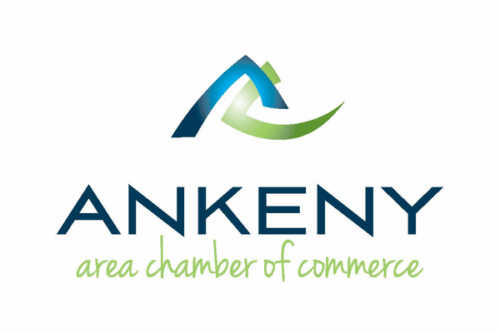Navigating through membership churn is like trying to sail a leaking boat—it’s a daunting yet common challenge for any organization. While some churn is expected, identifying when it becomes a critical threat is crucial for survival.
In this article, we will take a closer look at membership churn and its common causes. We’ll provide insights into how to improve retention rates and how to keep members engaged. Increasing member numbers for any membership-based organization is far too difficult to allow churn to cause an organization to slow down. Here’s a more proactive approach to maintaining your membership roster:
What is Membership Churn?
Membership churn is the number of an organization’s members who do not renew or cancel over a certain period. Some suggest membership churn is the opposite of membership retention. It is usually expressed as a percentage. A simple example would be if you had 100 members and 10 canceled or failed to renew, your customer churn rate would then be 10%.
Membership churn can also be called turnover or customer churn.
A high member churn rate usually results when members are not engaged, don’t recognize value, or are even ignored. Thankfully, these can all be addressed. It will result in reducing membership churn.
How Do You Calculate Churn Rate?
Churn rate can be determined for any period, whether it’s a week, month, year, or season.
To calculate the membership churn rate, you will need to know the number of members you had at the beginning of the period. You divide the number of members lost by the total number at the start of the period to calculate the member churn rate.
Churn Rate Formula
If an organization had 500 members at the start of a month and had 450 members at the end of the month, it lost 50 members, or .10.
The formula could be expressed as:
Lost members (50) divided by total members at the start of the period (500) x 100.
What is a Good Churn Rate For Membership Sites?
Churn rates can vary widely between products and services and industries. This can make it a bit of an unexact science to determine what is a “good” churn rate.
A 5-7% churn rate is often considered acceptable for a subscription-based membership site. Those operating at a membership churn rate of 4% or below are generally considered exceptional.
Organizations with an 8-10% churn need to monitor turnover carefully. Those with a churn rate above 10% are bailing water and are likely to have issues that need to be addressed. Thankfully, there are proven steps that can be taken to better manage these numbers.
Figure Out Why Churn is Happening
Even when churn rates are acceptable, it can be beneficial to proactively determine why any churn is occurring. While churn rates may be acceptable or even good, there are signs that you may be heading into choppy seas. Here is a look at some common symptoms.
Poor Onboarding Experience
If members don’t feel welcomed or supported from the start, they’re less likely to stick around. A confusing or impersonal onboarding process can leave members wondering if they made the right choice in joining.
Make sure new members understand how to get involved, access their benefits, and connect with others. Send welcome emails, host orientation webinars, and assign ambassadors to help new members settle in. A strong start often leads to long-term loyalty.
Outdated or Irrelevant Offerings
If your programs, resources, or events no longer align with members’ current challenges, they may start looking elsewhere. Member needs evolve, and your offerings should evolve with them.
Regularly assess your programming through surveys and participation data. Use this feedback to refresh your benefits, training opportunities, or events so that members continue to see your organization as a valuable resource.
Unclear Value Proposition
When members don’t fully understand what they’re getting for their dues, it’s easy for them to question whether renewal is worth it. Even the most engaged members may lose sight of your organization’s impact if it’s not consistently reinforced.
Make sure your value is communicated clearly throughout the year. Share success stories, highlight benefits in action, and regularly remind members how their involvement makes a difference.
Lack of Communication
When members only hear from your organization at renewal time, they may feel forgotten. Regular, meaningful communication helps maintain connections and reinforces the value of membership throughout the year.
Create a consistent communication cadence that blends education, community updates, and personalized outreach. When members see your messages as relevant and helpful, they’re more likely to stay engaged—and stay members.
Event Fatigue or Low ROI
If members feel that your events no longer deliver value, whether it’s poor networking, repetitive sessions, or high costs, they may start skipping them, which can be the first step toward churn.
Collect feedback after every event and look for patterns in attendance. Refresh formats, bring in new voices, and create opportunities for members to connect meaningfully. When your events feel worth the time and money, members are more likely to stay.
Competition From Other Associations
Sometimes churn happens simply because another organization offers something new or more appealing. Members might be drawn away by different benefits, lower dues, or a stronger sense of community elsewhere.
Keep an eye on what similar organizations are offering and highlight what makes your association unique. Showcase your impact stories and the connections members can’t find anywhere else.
Lack of Personalization
A one-size-fits-all approach rarely works. Members want to feel seen and valued, not treated as just another name on a list. Generic newsletters or irrelevant event invitations can cause members to tune out.
Use your data to personalize communications and experiences. Segment your email lists, recommend content based on interests, and acknowledge member milestones. Personalized attention strengthens loyalty.
Leadership or Organizational Changes
Transitions in leadership, policy, or structure can leave members uncertain about your organization’s direction. When communication about these changes is unclear, it can fuel doubt and disengagement.
During times of change, be transparent. Communicate openly about what’s happening and how it benefits members. When members understand and feel included in the process, they’re more likely to stay committed.
Signs a Member is Not Going to Renew
Even when your overall renewal rates look healthy, it’s smart to watch for early warning signs that individual members may be preparing to leave. By identifying these signals early, you can re-engage members before they make that final decision. Here are some of the most common red flags to look out for.
Low Engagement
When member engagement drops off, it’s often the first indication of trouble ahead. Members who stop attending events, opening emails, or logging into your portal are signaling disinterest—and that can quickly lead to nonrenewal.
Look for ways to keep members involved through polls, surveys, contests, or referral campaigns. Audit your engagement opportunities and make sure you’re consistently giving members reasons to participate.
Missing or Late Dues
Unpaid or late dues are one of the clearest signs that a member’s interest is fading. Often, it means they no longer view their membership as a priority.
Track dues closely and follow up early with friendly reminders, renewal incentives, and messages that highlight what they’ll miss by leaving. Sometimes a simple nudge or clearer renewal process can turn things around.
Diminishing Contributions
If your organization relies on donations or voluntary contributions, shrinking amounts from previously generous members can indicate declining enthusiasm. They may be directing their support elsewhere or losing faith in your mission.
When this happens, check in with a personal message or survey to understand their perspective. Showing that you notice and care can sometimes reignite their connection.
Not Taking Advantage of Membership Benefits
When members stop using benefits like discounts, resources, or networking opportunities, it may mean they no longer see value in your offerings. In some cases, they might not even be aware of what’s available to them.
Use email campaigns and reminders to spotlight underused benefits. Make sure your most popular offerings are easy to access and relevant to members’ evolving needs.
Drop in Event Attendance
Members who once attended regularly but start skipping meetings, webinars, or conferences are likely disengaging. This behavior often precedes nonrenewal.
Review attendance trends and follow up with those who have gone quiet. Ask for feedback on what would make events more worthwhile for them. Sometimes small adjustments can re-engage lapsed participants.
Minimal Communication or Interaction
If members aren’t responding to emails, surveys, or social media posts, it’s a clear sign your organization has slipped off their radar. Silence is often a precursor to churn.
Set up automated alerts or reports that identify members who haven’t interacted in a set period. A personalized check-in can remind them why they joined in the first place.
Poor Digital Engagement
Members who struggle with your website, renewal forms, or member portal may quietly give up rather than fight through a clunky experience.
Make sure your digital platforms are user-friendly and mobile-optimized. Simplify navigation, streamline renewals, and ensure your systems make it easy and not frustrating for members to stay involved.
Best Ways to Reduce Membership Churn
So, you may realize your member churn rate may be higher than you would like, and you may even recognize some of the symptoms. What, then, are some of the best ways to reduce membership churn?
Have a Solid Member Onboarding Sequence
Minimizing churn in any organization starts by ensuring you have a well crafted, member onboarding process.
This starts with a warm and sincere welcome and extends through a complete explanation of member benefits. Detail what your organization does and why. Encourage them to be involved and demonstrate ways they can make a difference. Make them aware that if they have any questions and concerns, you are there to help.
Be Accessible to Your Members
Knowing how your members prefer to be contacted and making your organization accessible are key components in limiting churn. The lines of communication must be kept as seamless as possible, and a prompt response to any inquiries is crucial.
Provide Alternatives to Canceling
Too often, an organization and its members view cancellations as a black and white issue. In fact, there are alternatives to accepting a cancelation that should be offered to reduce churn.
A reduced or special rate may be an option. Perhaps a lower support level could help maintain support, at least at some level. There are value-added features you may be able to offer. Ideally, you want to say to a member, “Rather than canceling your membership, how about….?” If you can finish the sentence with an attractive alternative, you may have just reduced member churn.
Keep Creating Engaging Content
One of the reasons members are driven to an organization or association is to stay connected and in contact. This is frequently done through news and industry updates. Keeping the content available to your members up-to-date, accurate, and pertinent to them is vital.
Provide examples of how national or world events impact them and your organization. Offer them tips and human interest stories. The fresher and more actionable your content is, the more value you are delivering to your audience.
Educational opportunities are perceived as having great value to members of an association. Keep members on top of trends and technology.
Pre-qualify Your Offering And Your Leads
Another factor that can lead to high turnover or churn is that it is likely that some of those in your organization may not belong in the first place. They may be joining just for a particular benefit. They may not have a real interest in the organization or a reason to maintain membership.
You can reduce member churn by pre-qualifying candidates for membership to ensure they are quality leads. Like customers, no two members are created the same. Ideally, you want an organization of active, involved, and supportive members.
Pre-qualifying leads can make your organization stronger and minimize membership churn.
Don’t Over-hype or Mis-sell Your Membership
Sure, you want to increase members and supporters. Of course, you would like to increase your ranks and income. Just be aware that activities used to increase membership can lead to higher member turnover rates. If you oversell your organization, overhype its activities, and over-promote your benefits, it can lead to disappointment and cancellations.
Organizations can sometimes be distracted by the lure of a shiny new member so that they forget that an uninvolved, uninterested, and unengaged one has little value. They may, in fact, be a cost to the organization. To reduce member churn, focus on increasing the quality of your membership. Maintain the integrity of your sales/recruiting process. It will pay off in a lower membership churn.
Stay Ahead of Churn Before It Starts
Even though membership churn and customer turnover are a normal aspect of organizations, associations, and businesses, they can still be a source of frustration. Even organizations with acceptable or low membership churn rates can view them as wasteful or even as a sign of failure.
The good news is, as we have learned, there are steps your organization can take in reducing membership churn. It is also important to note that there is technology available to assist in membership management and membership churn.
We encourage you to learn more at MemberClicks. Let’s connect members to your mission!
















